Great news!! I got a winter job!! Staring in February, I'll be working in the Supply Department, managing the food warehouses. As far as I know at this point, I'll be in charge of keeping track of the inventory in the warehouses (one frozen and one not) and of delivering food from the warehouses to the kitchen. More details will follow soon. A side note: apparently the frozen warehouse is haunted (or so some say). Back in 1979,
New Zealand Air Flight 901 crashed into the side of Mt. Erebus, killing everyone on board. Workers at McMurdo were called in to help with the recovery effort. The bodies that were found were kept in the frozen food warehouse (which didn't have food at the time) until they could be shipped off continent. According to some, the spirits of those people still haunt that warehouse. I'll let you know if anything spooky or suspicious occurs. ;)
A quick note for anyone sending mail down here. The last mail will be delivered in mid-February. If you plan to send a card or package, please do so as soon as possible. Once the summer research season ends on February 25, no more flights will come down here until mid-August. I don't know if mail will be stored in Christchurch until then or returned to sender.
Yesterday, the sun finally came out again after about 2 and 1/2 weeks of clouds and snow, so I took advantage of the chance to go on another hike. This time, I walked the Hut Point Ridge with my friend Chris. This trail starts at the Discovery Hut and winds its way up the nearby hills and around the station. It climbs pretty high, so I got great views of McMurdo and the surrounding area. Also yesterday, the icebreaker ship, the
Oden, arrived and docked in station. Right behind it was the research vessel, the
Palmer, which spent the night on the sea and docked this afternoon when the
Oden left.
 |
| The official McMurdo sign in front of the ice pier. |
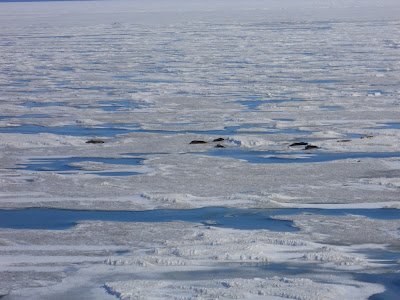 |
| A group of seals lying out on the melting sea ice. |
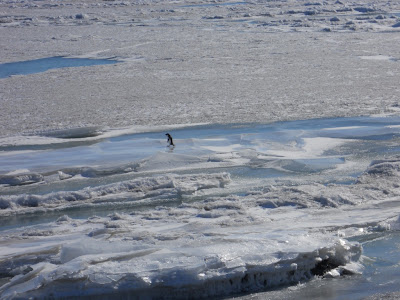 |
| A single penguin wanders around aimlessly. |
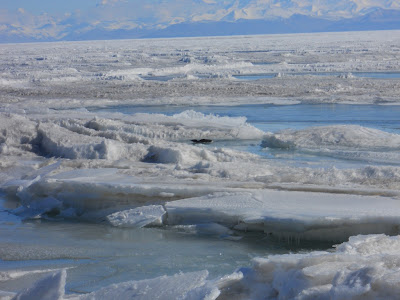 |
| Now he's sliding around on his belly. |
 |
| The sea ice is breaking up quite a bit. |
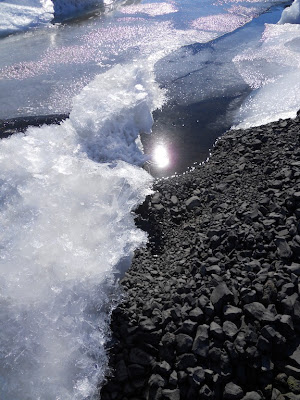 |
| Sunlight reflected in the water. |
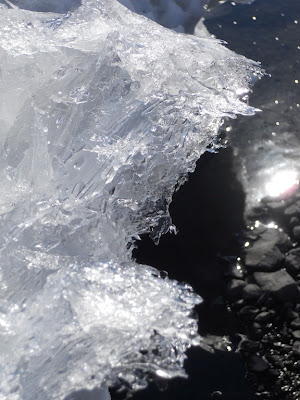 |
| Beautiful ice crystals. |
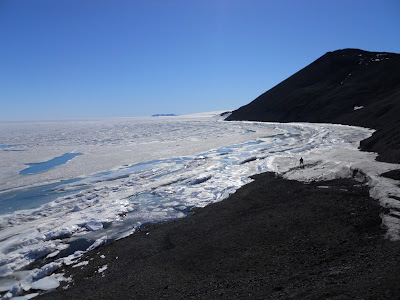 |
| A view of the melting shoreline near Hut Point. |
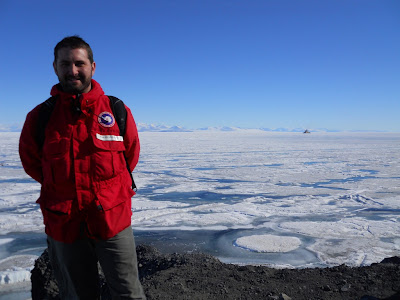 |
| In the distance, the icebreaker Oden makes its way through the sea ice. |
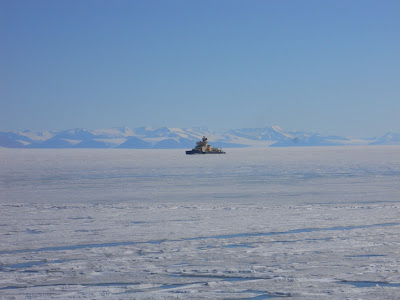 |
| A close-up of the icebreaker Oden. |
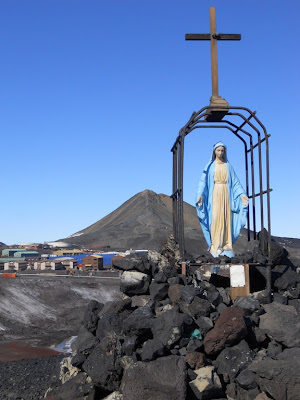 |
| A memorial to navy seamen Richard Williams who died in 1956 while helping to establish McMurdo Station. His tractor broke through the ice and sank to the bottom of the sea; his body was never recovered. |
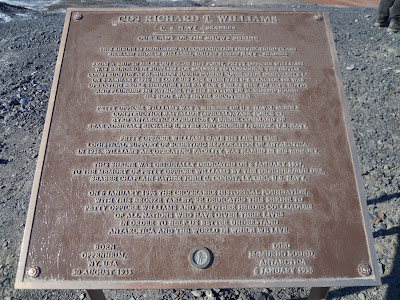 |
| A plaque dedicated to seamen Williams. |
 |
| A view of McMurdo Station from the north with Ob Hill in the background. |
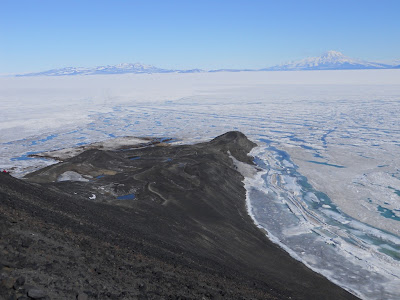 |
| Hut Point from up high. On the left is the old, defunct ice pier and Discovery Hut. |
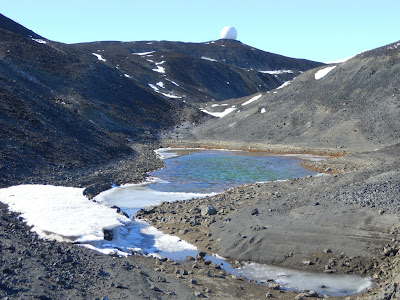 |
| A melt pool between the hills on Ross Island. I saw several of these during the hike, and the water was green, purple, and brown. Apparently algae or something of the sort lives in these pools during the summer months. |
 |
| My friend Chris, leading the way. |
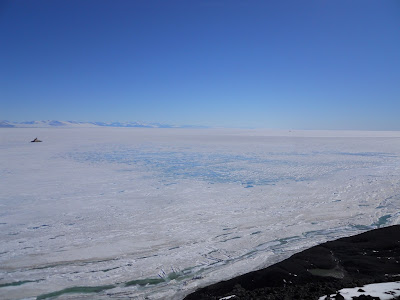 |
| A view of the melting sea ice from up high. On the left is the Oden and the speck in the distance is the Palmer. |
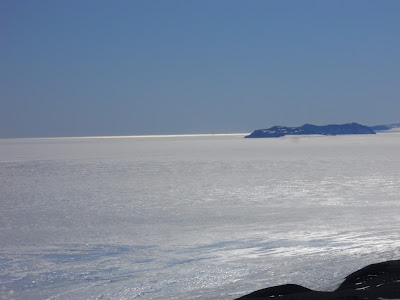 |
| Looking to the north, the sunlight reflects off the ocean water in the distance. |
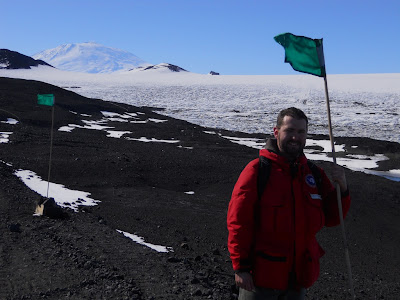 |
| Behind me lie Mt. Erebus and Castle Rock (the small brown formation on the right). It was very windy, as the flags indicate. |
 |
| Another view of Mt. Erebus and Castle Rock as well as the melting snow nearby. |
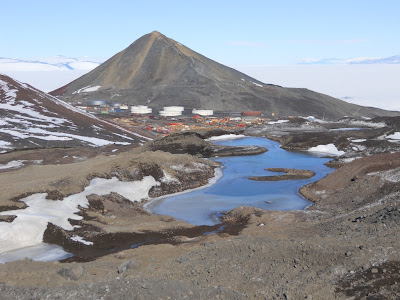 |
| A view of Ob Hill. |
 |
| As we finished the hike, the Oden had gotten considerably closer to the ice pier. |
Since Larry and I have now signed our winter contracts and completed the physical qualification process (which included passing a grueling 700-question psychological exam), we are now eligible for a week of rest and relaxation in Christchurch, New Zealand before the winter season officially begins on February 25. We leave on Saturday and return the following Saturday. Because I'll be on vacation, there will be no blog post next week, but I'll be back the following week with more photos and adventures. :)
Enjoy your vaca! I think the most striking thing about this set of photos is how non-white they are. The sea ice is breaking up to reveal liquid water, and much of the ground snow has melted, revealing dry (or wet) land. I just always think of Antarctica as a constantly snow/ice covered wasteland.
ReplyDelete